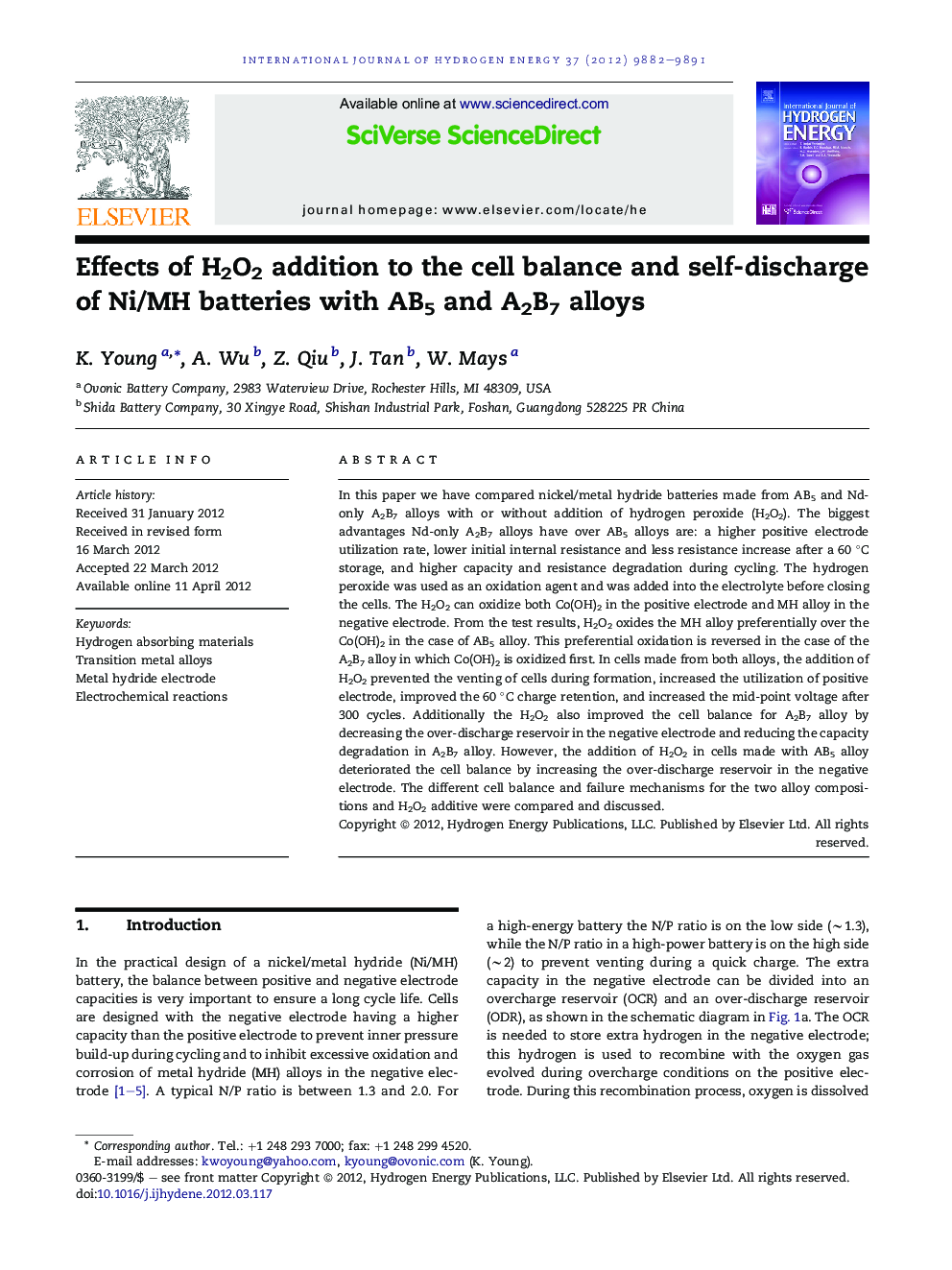| Article ID | Journal | Published Year | Pages | File Type |
|---|---|---|---|---|
| 1271303 | International Journal of Hydrogen Energy | 2012 | 10 Pages |
In this paper we have compared nickel/metal hydride batteries made from AB5 and Nd-only A2B7 alloys with or without addition of hydrogen peroxide (H2O2). The biggest advantages Nd-only A2B7 alloys have over AB5 alloys are: a higher positive electrode utilization rate, lower initial internal resistance and less resistance increase after a 60 °C storage, and higher capacity and resistance degradation during cycling. The hydrogen peroxide was used as an oxidation agent and was added into the electrolyte before closing the cells. The H2O2 can oxidize both Co(OH)2 in the positive electrode and MH alloy in the negative electrode. From the test results, H2O2 oxides the MH alloy preferentially over the Co(OH)2 in the case of AB5 alloy. This preferential oxidation is reversed in the case of the A2B7 alloy in which Co(OH)2 is oxidized first. In cells made from both alloys, the addition of H2O2 prevented the venting of cells during formation, increased the utilization of positive electrode, improved the 60 °C charge retention, and increased the mid-point voltage after 300 cycles. Additionally the H2O2 also improved the cell balance for A2B7 alloy by decreasing the over-discharge reservoir in the negative electrode and reducing the capacity degradation in A2B7 alloy. However, the addition of H2O2 in cells made with AB5 alloy deteriorated the cell balance by increasing the over-discharge reservoir in the negative electrode. The different cell balance and failure mechanisms for the two alloy compositions and H2O2 additive were compared and discussed.
► Use of H2O2 in pre-oxidizing the active material is disclosed for the first time. ► The advantages of Nd-A2B7 over AB5 MH alloys are discussed. ► Cell balance of Nd-A2B7 is improved by H2O2. ► Cell balance and failure mechanism of Ni/MH are fully discussed.
